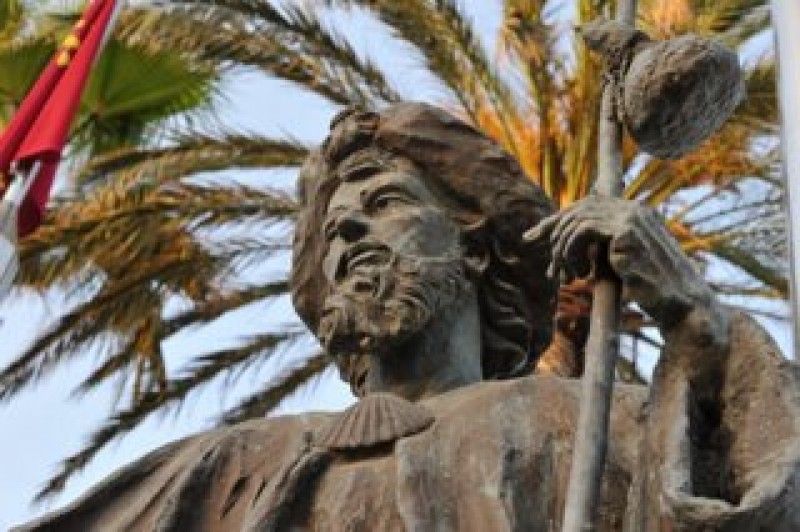- Region
- Águilas
- Alhama de Murcia
- Jumilla
- Lorca
- Los Alcázares
- Mazarrón
- San Javier
-
ALL AREAS & TOWNS
- AREAS
- SOUTH WEST
- MAR MENOR
- MURCIA CITY & CENTRAL
- NORTH & NORTH WEST
- TOWNS
- Abanilla
- Abarán
- Aguilas
- Alamillo
- Alcantarilla
- Aledo
- Alhama de Murcia
- Archena
- Balsicas
- Blanca
- Bolnuevo
- Bullas
- Cañadas del Romero
- Cabo de Palos
- Calasparra
- Camping Bolnuevo
- Campo De Ricote
- Camposol
- Canada De La Lena
- Caravaca de la Cruz
- Cartagena
- Cehegin
- Ceuti
- Cieza
- Condado de Alhama
- Corvera
- Costa Cálida
- Cuevas De Almanzora
- Cuevas de Reyllo
- El Carmoli
- El Mojon
- El Molino (Puerto Lumbreras)
- El Pareton / Cantareros
- El Raso
- El Valle Golf Resort
- Fortuna
- Fuente Alamo
- Hacienda del Alamo Golf Resort
- Hacienda Riquelme Golf Resort
- Isla Plana
- Islas Menores & Mar de Cristal
- Jumilla
- La Azohia
- La Charca
- La Manga Club
- La Manga del Mar Menor
- La Pinilla
- La Puebla
- La Torre
- La Torre Golf Resort
- La Unión
- Las Palas
- Las Ramblas
- Las Ramblas Golf
- Las Torres de Cotillas
- Leiva
- Librilla
- Lo Pagan
- Lo Santiago
- Lorca
- Lorquí
- Los Alcázares
- Los Balcones
- Los Belones
- Los Canovas
- Los Nietos
- Los Perez (Tallante)
- Los Urrutias
- Los Ventorrillos
- Mar De Cristal
- Mar Menor
- Mar Menor Golf Resort
- Mazarrón
- Mazarrón Country Club
- Molina de Segura
- Moratalla
- Mula
- Murcia City
- Murcia Property
- Pareton
- Peraleja Golf Resort
- Perin
- Pilar de la Horadada
- Pinar de Campoverde
- Pinoso
- Playa Honda
- Playa Honda / Playa Paraíso
- Pliego
- Portmán
- Pozo Estrecho
- Puerto de Mazarrón
- Puerto Lumbreras
- Puntas De Calnegre
- Region of Murcia
- Ricote
- Roda Golf Resort
- Roldan
- Roldan and Lo Ferro
- San Javier
- San Pedro del Pinatar
- Santiago de la Ribera
- Sierra Espuña
- Sucina
- Tallante
- Terrazas de la Torre Golf Resort
- Torre Pacheco
- Totana
- What's On Weekly Bulletin
- Yecla


- EDITIONS:
 Spanish News Today
Spanish News Today
 Alicante Today
Alicante Today
 Andalucia Today
Andalucia Today
An introduction to Santiago de la Ribera
A beach resort on the coast of the Mar Menor in the Costa Cálida
Santiago de la Ribera lies within the municipality of San Javier, and in terms of population is the largest district, occupying the area on the inland shore of the saltwater lagoon of the Mar Menor. The district includes some of the finest beaches in the northern half of the Mar Menor, and is also home to the Academia General del Aire, the Spanish air force’s officer training academy.
In effect it is the beach area of the town of San Javier, located 3 kilometres from the main town centre, and its 4 kilometres of beaches make it a popular destination for tourists from other parts of Spain and the rest of Europe. San Javier has two distinct areas of beach and tourism activity, one being this one on the mainland and the other section lying at the northern end of La Manga del Mar Menor and boasting beaches not only on the shore of the lagoon but also on the Mediterranean.
The attractive beaches make Santiago de la Ribera an important tourism destination within the Region of Murcia and many families from other areas of Spain have owned property in the area since the Mar Menor first began to develop as a tourism destination.
Santiago de la Ribera has a friendly, homely air as a result, and is also home to a substantial year-round population, retaining a strong feel of community at all times and making it popular with non-Spaniards.
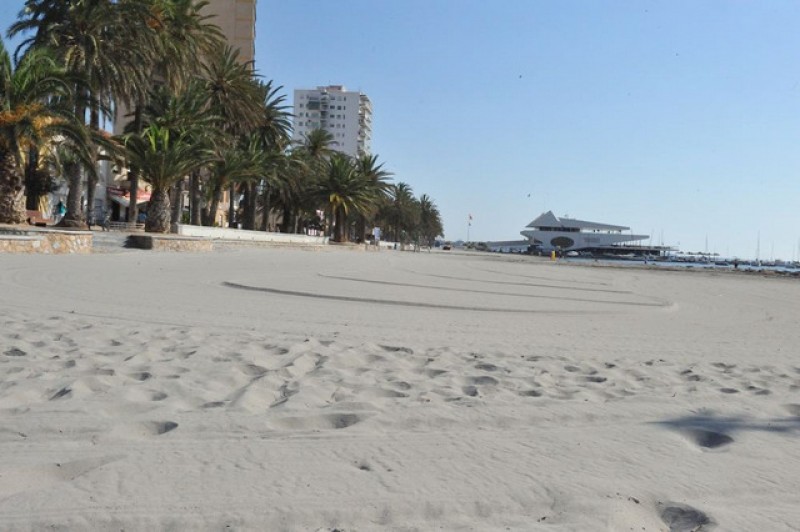
History
Although there is evidence of prehistoric activity in and around Santiago de la Ribera there is little to indicate any permanent settlement, the most likely scenario being that groups of hunter-gatherers travelled between the highest land points of the area harvesting molluscs and seafood. Tantalising evidence in the Cueva Victoria in El Beal points to the existence of an early pre-hominid, Theropitecus Oswaldis, who lived in the area 2.5 million years ago, and later on Neanderthals are known to have inhabited the Cabezo Gordo in Torre Pacheco, looking out over the Mar Menor.
The Mar Menor itself was home to an important trading settlement during the period 500-700 BC, when the Greeks and Phoenicians were regular visitors to San Pedro del Pinatar and made it an important centre of trading activity between cultures.
Following the invasion of the Romans in 209 BC, when they ousted the Carthaginians from the city of Cartagena, the Mar Menor assumed an important role, as the colonists took advantage of the natural resources, building salt flats (the modern-day “salinas”) and developing agriculture. The whole area around Santiago de la Ribera was part of the south-eastern region of the Iberian Peninsula known by the Romans as Contestania.
At this time, Santiago de la Ribera was mainly swampland on the edge of a saltwater lagoon which was a rich fishing ground, the land inhabited only by rabbits and other hunting prey. The natural vegetation included esparto grass, itself a valuable export crop which could be used to make shoes, rope and baskets, while a little further inland there was plenty of opportunity to clear forested areas and plant cereal crops, olives and grapes in place of the felled trees.
There are remains of several sizeable Roman villas around the Mar Menor, and they would have been defended by soldiers against possible attacks. During the period of Roman occupation, which ended in the 4th century AD, much of the land close to the lagoon was cleared and rudimentary drainage systems were introduced in order to reduce the high salinity of the water and the subsoil.
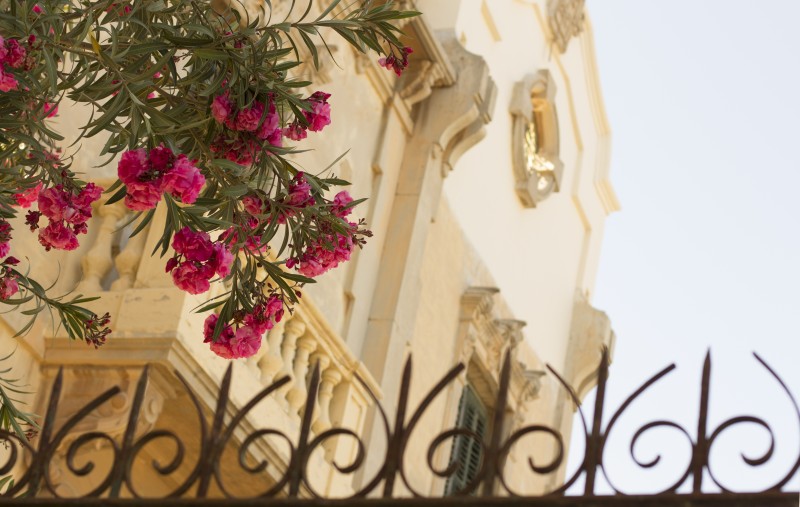
By the time of the invasion of the Moors in 713 AD the area had been practically abandoned, and the new inhabitants preferred to establish themselves further inland and in the Segura valley. The countryside around Santiago de la Ribera was dotted with watchtowers and there were also a few buildings whose purpose was to provide leisure and rest, as was the case in nearby Los Alcázares, where the Moors built palaces in order to take advantage of the baths left by the Romans.
After the Christian Reconquista of the Kingdom of Murcia in 1243, Alfonso X El Sabio attempted to encourage the repopulation of the land along the shore of the Mar Menor by offering incentives to families from Castilla and Aragón, and in this initiative he was successful to the extent that it is from this period that the surnames of Roldán, Pagán, Roda and Pacheco became associated with the area, later being used as the names of towns and villages.
Alfonso X also built new coastal watchtowers, and over the coming centuries farmhouses slowly grew into communities as neighbours grouped together close to the protection of these defensive structures. But the tranquility was interrupted in the 16th and 17th centuries by the onset of the Berber pirate raids from the north of Africa, and fear became a part of the daily lives of the fishermen and farmworkers who made their living here. More watchtowers and fortresses arose all along the shore, but despite the added protection the population of the area once again fell.
At this point there was a small church dedicated to St John the Baptist in Calavera, which was re-dedicated to San Blas in the 16th century, and some historians maintain that this was the origin of what later became Santiago de la Ribera. Every spring the Romería of San Blas ends at the church which still stands on the site.
However, the more commonly accepted version is that it was at the Torre Mínguez farm estate that Santiago de la Ribera began to grow. This was built by Antonio Lisón, a governor of the city of Murcia, and one of those to inherit it was Teresa Sandoval y Mena, who married José María Barnuevo y Rodrigo de Villamayor de Ulloa, a dignitary in the Order of Santiago.
The couple had ambitious plans for Torre Mínguez: firstly, they wanted to turn it into a hotel, and secondly, they intended to sub-divide the land and enable tenants to build a family home on each of the resulting plots. Out of these plans grew the new settlement of Santiago de la Ribera in 1888, the name being derived from the Order of Santiago.
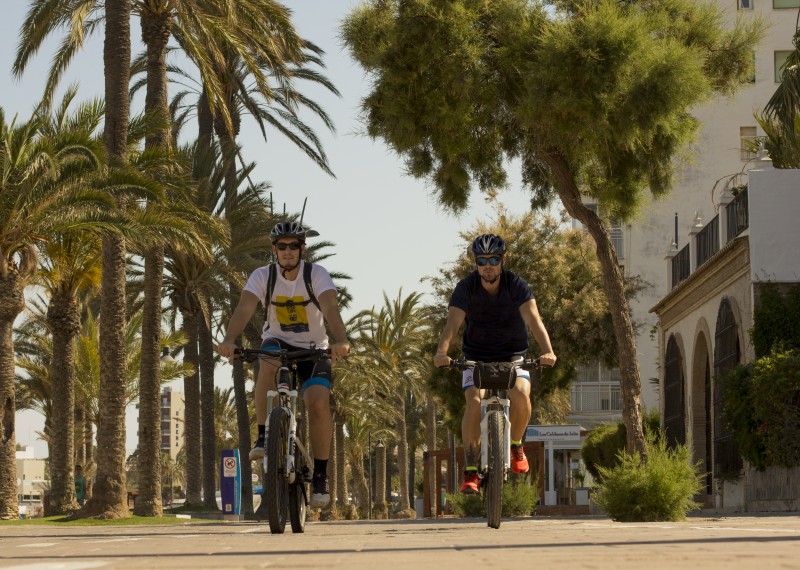
The first stages of the development of Santiago de la Ribera were closely overseen by the Barnuevo-Sandoval family, who laid down basic guidelines for future urban development. Many families from Murcia were attracted by the location, the climate and the easy access to existing communications networks, and numerous holiday homes were built by the upper classes of Murcia, turning Santiago into a thriving resort. (See the History of San Javier for more information)
A further boost to the growth of Santiago de la Ribera came in 1929, when work began on the construction of the Navy’s air base on land acquired from the Barnuevo family, and in 1943 the Academia General del Aire was founded at the same location. In 1968 this pilot training airfield was opened to civil aircraft and passengers, and after that Murcia-San Javier airport was shared by Aena and the Ministry of Defence, the base remaining home to the Patrulla Águila aerobatic display team.
Nowadays Santiago de la Ribera is one of the most popular and prosperous tourist resorts on the Costa Cálida, and its population grows by 300% during the summer months. Visitors will find a full range of facilities, with plenty of hotels, restaurants, shops and bars, and the residential streets behind the front line beaches are populated with established holiday properties and residential dwellings, the whole area maintaining an essentially Spanish holiday resort ambience.
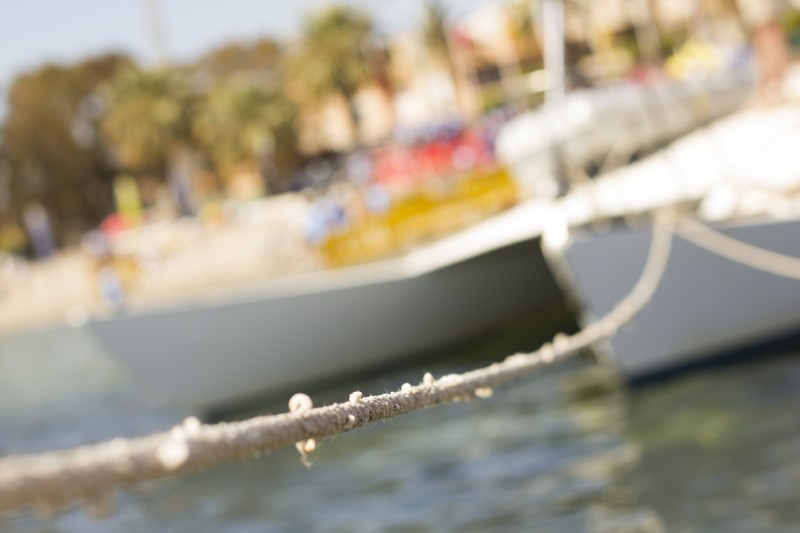
The beaches of Santiago de la Ribera
The four kilometres of beach occupying the east-facing Mar Menor coastline in San Javier are divided into the following areas:
Playa del Atalayon (sailing moorings only, no beach)
Click for more information about these, and the other beaches within the municipality of San Javier.
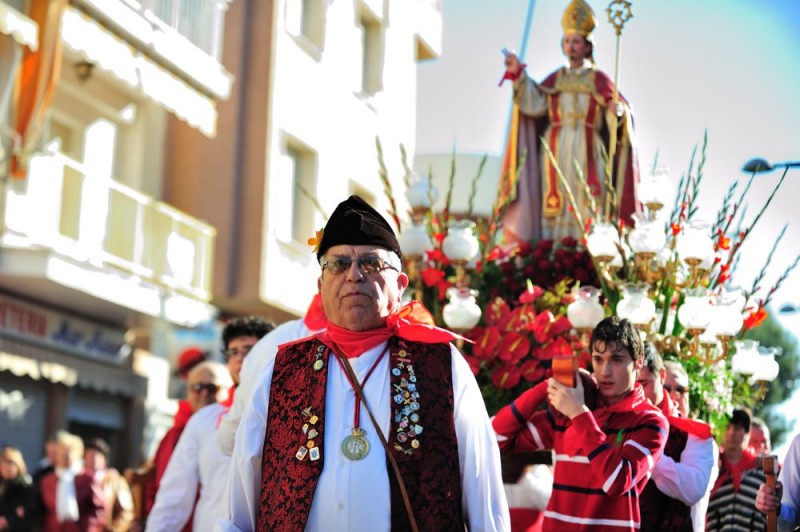
Annual fiestas in Santiago de la Ribera
(see also Fiestas in the municipality of San Javier)
3rd February, the Romería of San Blas: although this event has its roots in the 16th century, the Romería only began in 1980. Each year the figure of San Blas is carried from Santiago de la Ribera to the church of San Blas, accompanied by thousands as the crowd swells along the route. On arrival at the church, the participants enjoy a day of music and picnicking, sharing fellowship with family and friends.
Carnival: the Carnival celebrations of Santiago de la Ribera are rapidly establishing themselves as some of the most colourful in the Region of Murcia, and are held as the “Carnival of the Mar Menor”.
23rd June, the night of San Juan: the traditional midsummer celebrations include bonfires on the beach and plenty of fun, fireworks and swimming in the Mar Menor.
16th July, the Fiestas de la Virgen del Carmen: 16th July is the feast day of the Virgen del Carmen, the protector of fishermen, and during the fiestas in Santiago de la Ribera the figure of the Virgin is carried out to sea by the fishermen in a marine Romería.
25th July, the Fiestas Patronales de Santiago Apóstol: Santiago de la Ribera was named after Santiago (Saint James), whose feast day comes hot on the heels of the Fiestas del Carmen. It is said that following the death of Christ Santiago may have landed in Spain in Cartagena before spreading the Christian message, and there are statues of him both in Cartagena and in Santiago de la Ribera. The latter is in front of the Explanada Barnuevo, which is where most of the celebrations take place around the main date.
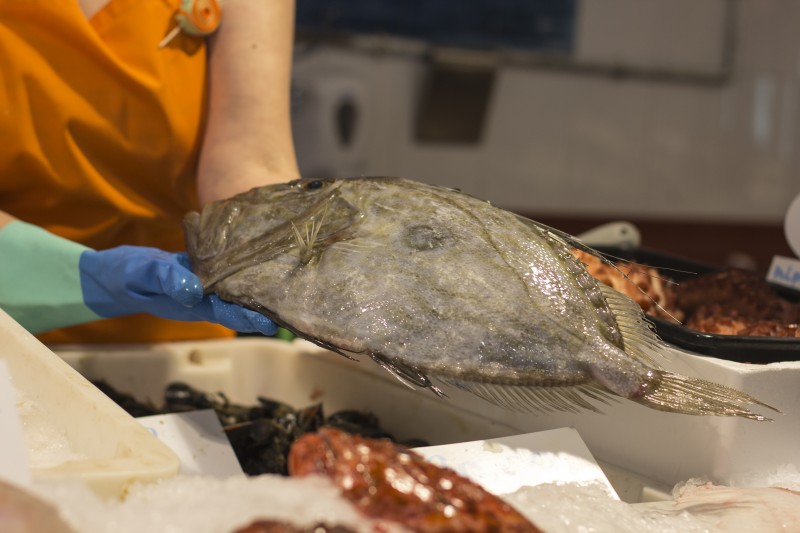
Local gastronomy
As in the rest of the Mar Menor and San Javier area, the local gastronomy is dominated by the seafood from the lagoon and the fruit and vegetables grown just inland in the campo de Cartagena.
Typical dishes include the “caldero” fish-stock paella, and the dried salted fish known as “salazón” or “mojama” (cured fish roe). Another local speciality is the pie known as “pastel de cierva”, which mixes sweet and sour tastes with ingredients which include poultry, eggs and sugar and is absolutely delicious!
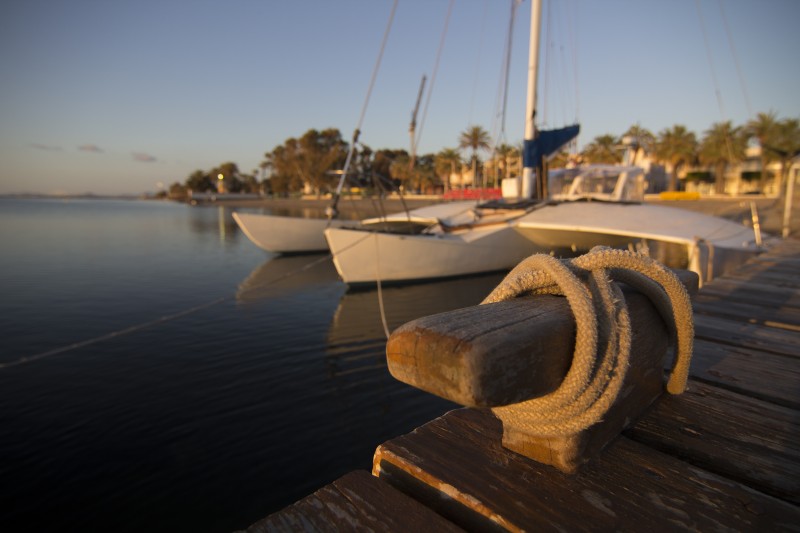
Travelling to and from Santiago de la Ribera
Getting to Santiago de la Ribera is possible by almost all means of transport, and in the past was especially easy by air due to the proximity of Murcia-San Javier airport just a five-minute drive away. Even now, the Region of Murcia International Airport in Corvera is no more than half an hour away by car.
The town’s location close to the AP-7 and RM-19 motorways also puts it within easy driving distance not only of the town centres of San Javier, Los Alcázares and San Pedro del Pinatar, but also of the cities of Murcia (35 minutes), Cartagena (320 minutes) and Alicante (60 minutes), as well as Alicante-Elche airport.
Almost equally importantly, the ferry to La Manga del Mar Menor runs to and from Santiago de la Ribera, providing an easy way to visit and saving on time and stress, especially during the summer, when La Manga del Mar Menor is packed with holidaymakers.
Click here for information about services within the Santiago de la Ribera district.
Click here for more information about the municipality of San Javier.
More local information, news and events in Santiago de la Ribera:
Cartagena
El Carmoli
Islas Menores and Mar de Cristal
La Manga Club
La Manga del Mar Menor
La Puebla
La Torre Golf Resort
La Union
Los Alcazares
Los Belones
Los Nietos
Los Urrutias
Mar Menor Golf Resort
Pilar de la Horadada
Playa Honda / Playa Paraiso
Portman
Roldan and Lo Ferro
San Javier
San Pedro del Pinatar
Santa Rosalia Lake and Life resort
Terrazas de la Torre Golf Resort
Torre Pacheco
Aledo
Alhama de Murcia
Bolnuevo
Camposol
Condado de Alhama
Fuente Alamo
Hacienda del Alamo Golf Resort
Lorca
Mazarron
Puerto de Mazarron
Puerto Lumbreras
Sierra Espuna
Totana
Abaran
Alcantarilla
Archena
Blanca
Corvera
El Valle Golf Resort
Hacienda Riquelme Golf Resort
Lorqui
Molina de Segura
Mosa Trajectum
Murcia City
Peraleja Golf Resort
Ricote
Sucina
Condado de Alhama
El Valle Golf Resort
Hacienda del Alamo Golf Resort
Hacienda Riquelme Golf Resort
Islas Menores and Mar de Cristal
La Manga Club
La Torre Golf Resort
Mar Menor Golf Resort
Mazarron Country Club
Mosa Trajectum
Peraleja Golf Resort
Santa Rosalia Lake and Life resort
Terrazas de la Torre Golf Resort
La Zenia
Lomas de Cabo Roig

CAMPOSOL TODAY Whats OnCartagena SpainCoronavirusCorvera Airport MurciaMurcia Gota Fria 2019Murcia property news generic threadWeekly Bulletin

